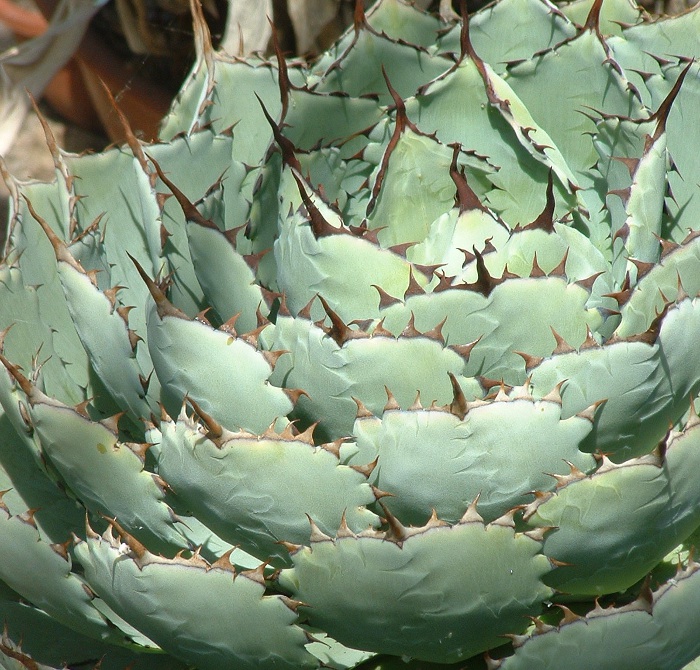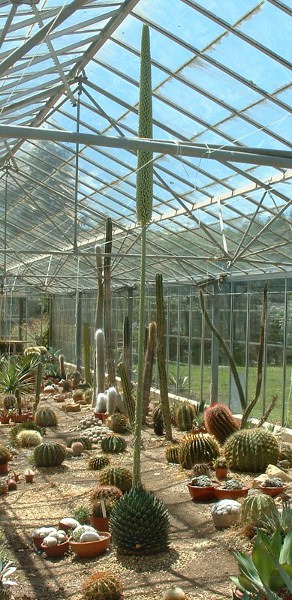The Arid House.
This site is dedicated the Agave, a genera that has
much to offer collectors due to the many leaf forms and growth habits. Some of these plants
can grow to huge proportions in their natural habitat or where they can be grown outdoor throughout
the year. In many Mediterranean countries the plants make good garden specimens.
In other locations with a less favourable climate, modest specimens can be grown in a greenhouse.
The Arid House site has images of actual plants in my collection based in the UK and of
those seen in other collections that have caught my eye.

Agave Guadalajarana seen at Eau Brink Cacti.
Agaves cultivated in captivity can be difficult to identify because there
are many intermediate forms between various agaves as well as many hybrid forms. It is not
always possible to place a specimen in a specific category as defined by Gentry et. al. In
captivity plants grown in pots under conditions far removed from their natural habitat, can exhibit
variations in growth habit and leaf form.
The size of rosettes can vary from a few cm up to 2-3m across. The smaller forms
and in particular those displaying varigation, are much sought after by collectors.

Victoria Reginae flower spike seen at Eau Brink Cacti.
Agaves are monocots, and flower from the central
growing point. After flowering, the rosette dies. Agaves reproduce by seed,bulbils and by suckers or
pups.

Some of the viewable images on this site are presented as a pop up window and
are of a large size. They are best viewed using a monitor resolution of 1024 x 768 or better. Javascript
is also required to be enabled.